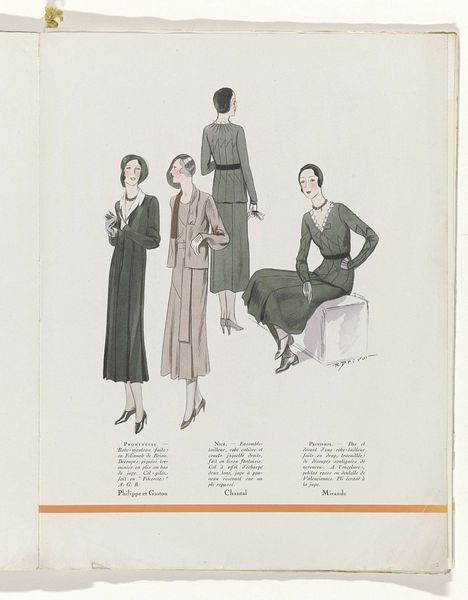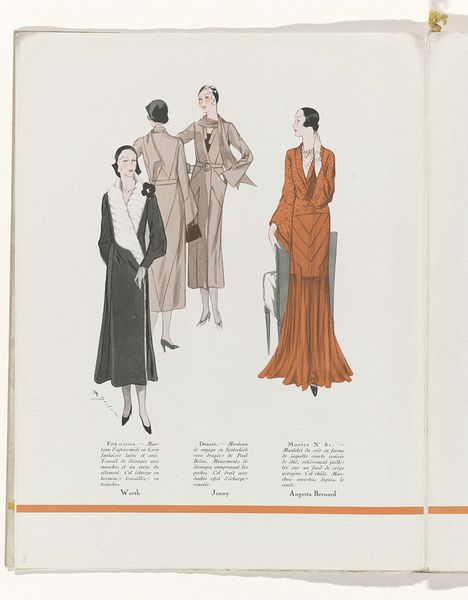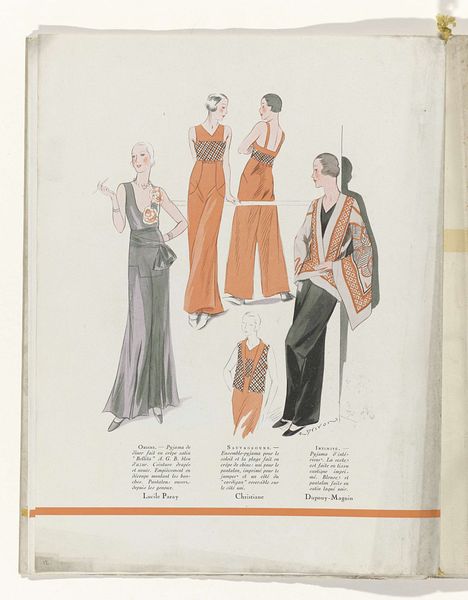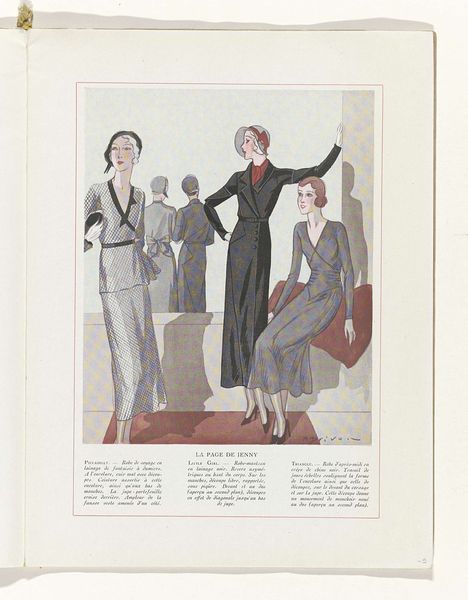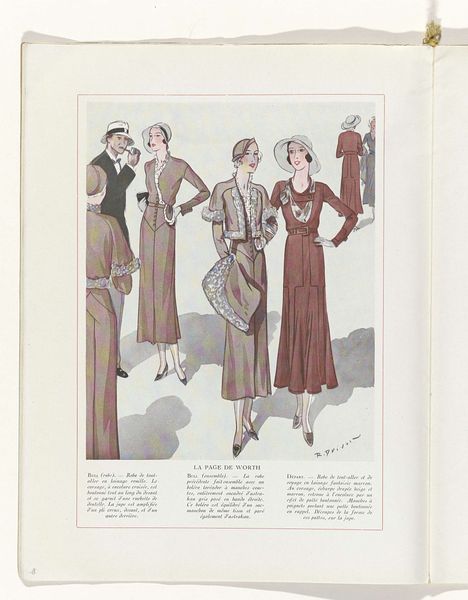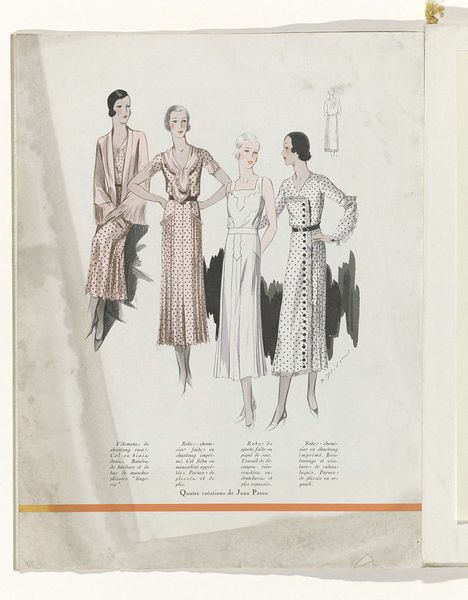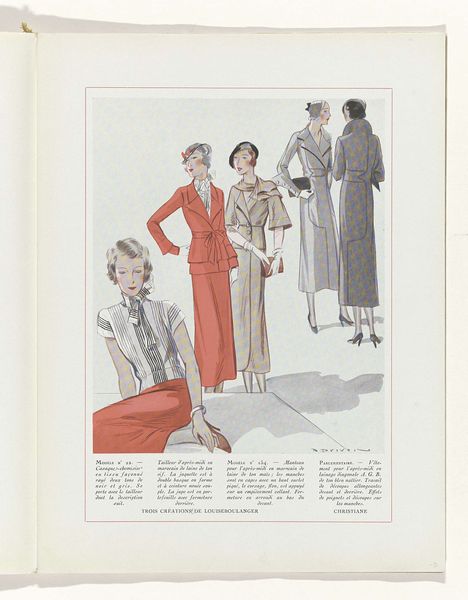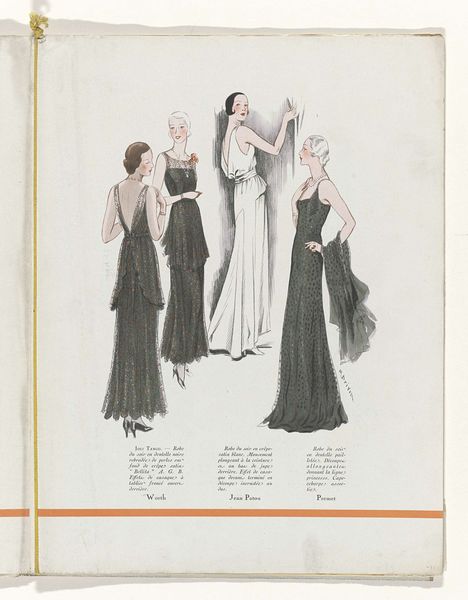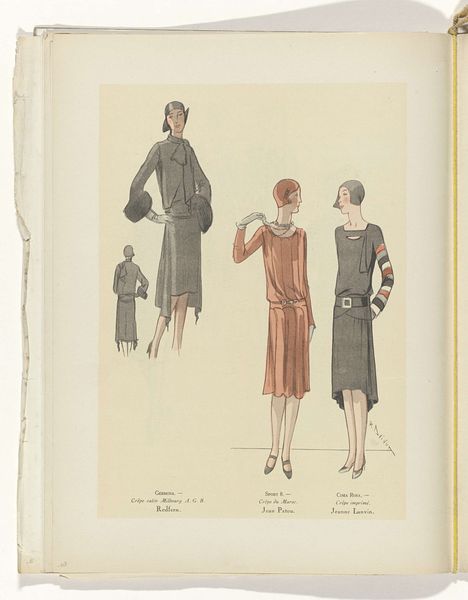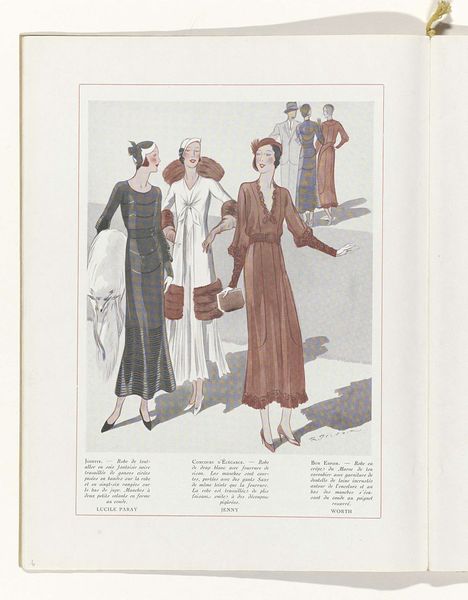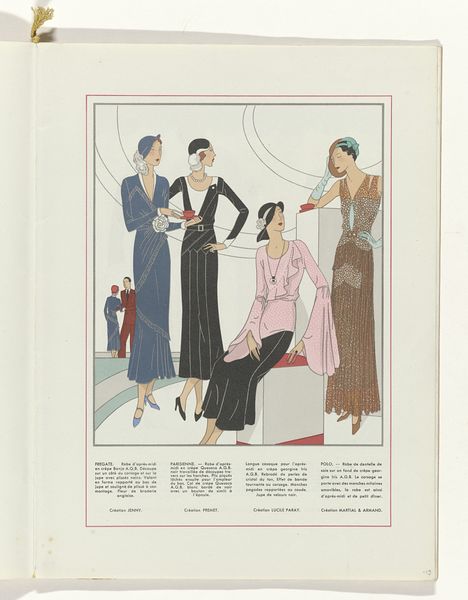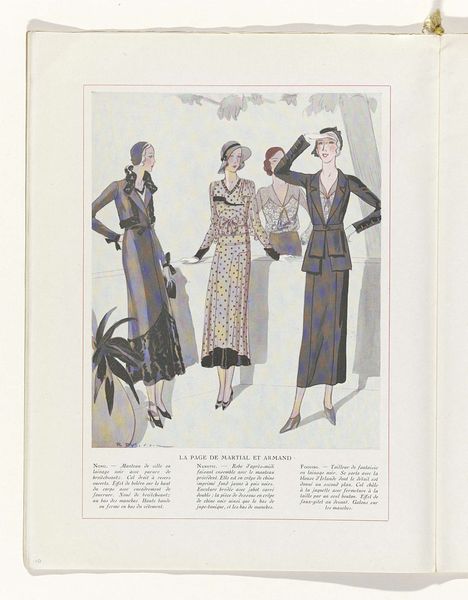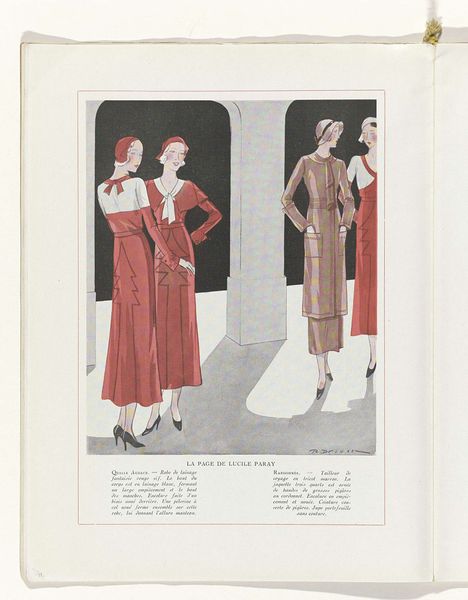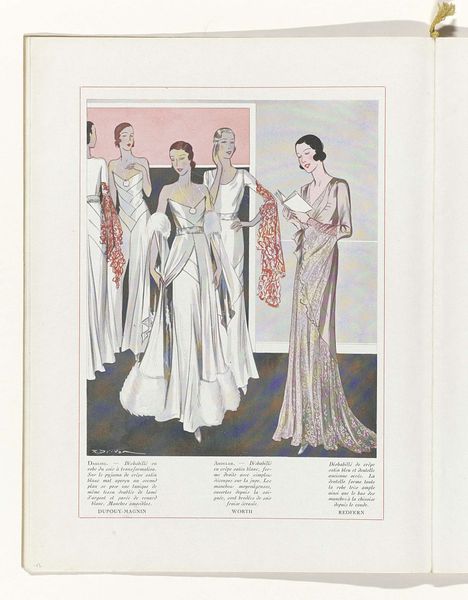
Art - Goût - Beauté, Feuillets de l' élégance féminine, Mai 1931, No. 129, 11e Année, p. 9 1931
0:00
0:00
drawing, print, watercolor
#
art-deco
#
drawing
# print
#
watercolor
#
historical fashion
#
watercolour illustration
#
dress
#
watercolor
#
clothing design
Dimensions: height 315 mm, width 240 mm
Copyright: Rijks Museum: Open Domain
Editor: So, this print by R. Drivon, "Art - Goût - Beauté" from 1931, presents a collection of watercolor fashion designs. The delicate lines and soft colors create a feeling of elegance, but there's also something a little melancholy about these depictions. What strikes you most when you look at this? Curator: It’s the labor and production behind it that grabs my attention. We're not just looking at images of dresses; we're witnessing the output of the fashion industry, distilled through the artistic labor of Drivon. These images, likely mass-produced prints, represent the consumption and circulation of fashion ideas in the early 20th century. Editor: So you’re thinking about the material conditions that allowed this image to exist? How the paper was made, the ink printed, the industrial processes involved? Curator: Exactly. And consider the social context. These designs target a specific consumer class. They highlight the availability and aspirations surrounding these goods. The watercolor medium, often associated with delicacy, actually obscures the intensive labor in garment production. Do you see how the print is positioned to influence the viewer to actively consume what it displays? Editor: That makes sense. I was initially focused on the artistic style and composition, but seeing it as part of this broader network of production and consumption…it changes how I view the image. Curator: Right! By focusing on materials, we can examine it as a material object itself and how it participates in shaping social and economic behaviors. The illustration served as both a piece of art and a tool to motivate a very gendered marketplace. It highlights how design itself serves market economics. Editor: I see how thinking about production reveals those connections. It helps connect this elegant image to a much wider world of labor, materials, and money. Curator: Precisely. Considering those relationships gives new value to our interpretations of even simple magazine prints.
Comments
No comments
Be the first to comment and join the conversation on the ultimate creative platform.
